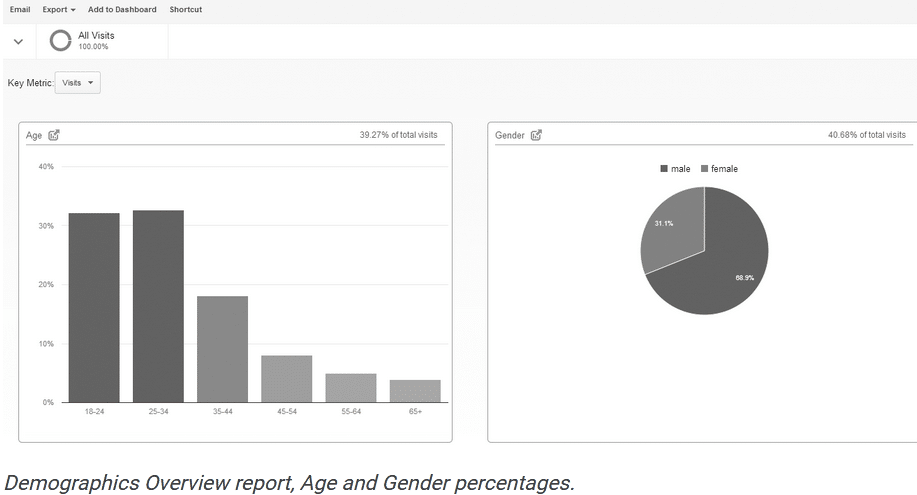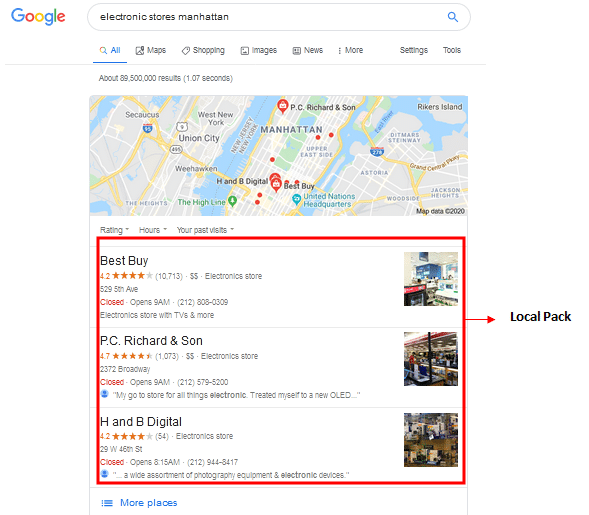Howdy Folks,
The ecommerce industry is booming. Experts are calling the COVID-19 pandemic an “inflection point” for the ecommerce sector. It is one of the few industries that is witnessing unparalleled growth during the crisis.
Don’t believe me?
Contents
Introduction:
Amazon’s Jeff Bezos has seen his fortune increase by nearly $24 billion since the pandemic set in. Not only revenue but the spike in eCommerce penetration is also evident. UBS estimates that penetration rates of eCommerce will increase from 15% in 2020 to 25% by 2025. That’s a whopping 67% surge in five years. Ecommerce is being widely adopted by buyers.
The reason?
Apparently, the pandemic is changing buyer behavior. It has forced buyers to change their buying habits and shift from brick-and-mortar stores to the web.
The impact of COVID-19 on eCommerce is not lost on developers and vendors. They are reacting proactively to the changing needs and aspirations of their newfound audience.
Are you behind the curve?
Don’t worry. I have you covered. In this post, I’ll discuss the top five trends that the eCommerce industry will witness in 2020.
Let’s Get started?
How is Ecommerce Expected to Change in 2020?
Cashless payment modes, flexible refund policies, and great customer experience are e-commerce trends of the past. In 2020, eCommerce will leverage technology, social media, and corporate social responsibility (CSR) to get a competitive edge.
1. Google Will Be the New Marketplace
Do you know that 63% of all shopping starts online?
Out of this, Google searches account for 87.35% of search queries. This means that if your eCommerce site is not visible to Google, you can’t really hope to attract shoppers.
Take a look at some easy tactics to rank on Google:
● Define Your Target Audiences
Create accurate personas for the people visiting your sites and your target audiences.
Make use of Google Analytics (GA) and third-party tools to capture details about your site visitors. Dive deep into details such as their online active times, brand affinity, and challenges.

Figure out the visitors’ onsite behavior, the devices that are producing maximum organic traffic, and revenue per channel.

You can also find out the exact points where visitors are dropping out of your sales funnel. This will help you optimize your site structure and user experience so that you can effectively retain and convert visitors.
Using GA’s multi-channel funnels, you will be able to identify the conversion paths which are giving your eCommerce site maximum traction. Then, you can focus your effort on the high-converting marketing channels.

The more precise your customer analysis, the more targeted your marketing plan will be.
● Research Your Competitors
Reverse-engineer and replicate the strategies used by the eCommerce stores in your domain that are ranking high on Google.
Find out answers to questions like these:
- Do your competitors have valuable backlinks from authority sites?
- Are they targeting different keywords?
- Is their site’s user experience better?
You can spy on your competitors’ sites using tools like SpyFu and SEMrush. They will analyze everything that’s working for your competitors, from backlinks to ad copy.
Then, use Google’s Keyword Tool to compare keywords for cost-per-click (CPC), search volume, and click-through rate (CTR).

Target the keywords with low competition and CPC. Include these keywords strategically in your site’s HTML so that Google crawlers can find your pages quickly. Apart from this, leverage SEO trends like optimizing your site for voice and visual search.
● Get Listed in Online Directories
Online directories like Google My Business (GMB) are a good place to get listed for catching the eye of searchers. 64% of searchers use GMB to look up contact details of businesses.

Create a GMB account and keep your listing accurate and updated. Include the following information in your listing:
- NAP (name, address, and phone number)
- Customer reviews and ratings
- Business hours (or customer service hours, whichever is applicable)
- Website address
If your GMB listing is strong, there’s a good chance of searchers becoming visitors and eventually paying customers of your ecommerce store.
Additionally, you can get your store listed on domain-specific directories like Yelp and TripAdvisor.
● Make Your Site Mobile-Friendly
It’s no secret that most Google searches happen through mobile devices. Not only does a mobile-friendly ecommerce site get more visitors, but it also gives them a good user experience (UX). UX is one of the top-ranking factors for Google.
These are some ways by which you can mobile-optimize your site:
- Design a responsive site that renders well on all mobile devices.
- Deliver an omnichannel shopping experience so that your customers can switch from social to onsite to in-store seamlessly.
- Use white space liberally so that your site is thumb-friendly.
- Place your calls-to-action (CTAs) where they catch maximum attention.
- Have an intuitive navigation and site architecture so that visitors can find content easily.
- Allow guest checkouts so that infrequent visitors don’t have to register before shopping.
- Optimize your product images so that they render clearly on small screens and load fast.
- Use geolocation to suggest nearby pick up points and store branches.

Once you have the basics in place, you can growth-hack mobile conversions by promoting your site on social media and leveraging influencers.
2. Brands Will Act Responsibly
The COVID-19 pandemic has changed shoppers’ priorities. Earlier, online shoppers were most excited about bagging the best deal. Now, they are worried about financial planning, health, hygiene, and safety.
This graphic from Kantar shows how consumer expectations from brands have changed:

E-commerce brands need to up their game and meet shoppers’ heightened expectations.
Here’s how you can do it:
- Take control of your supply chains so that shoppers are assured of essentials and don’t resort to panic buying. Target has shifted its focus to low-margin product categories like food and groceries that are in demand. They have a new AI-based delivery system so that shoppers are never left in a lurch.

- Deliver real value by incentivizing shoppers to stay at home and shop. You can launch a mobile app or provide free home delivery, like Chipotle.

- Do right by the community by helping with COVID-19 relief work. Serta Simmons Bedding is donating 10K mattresses to NY hospitals. Airbnb is converting its properties into quarantine centers for healthcare workers.

- Airbnb’s CEO just announced a 260-million relief package to its hosts to cover losses due to booking cancellations during the lockdown. The move shows the brand’s empathetic attitude towards co-workers which will earn them brownie points from customers.

In 2020, ecommerce brands will need to realize their social responsibility if they want to earn a place in shoppers’ hearts.
3. Ecommerce Will Get Tech-Savvy
Since the demand for online shopping has peaked, brands will leverage technology to ensure 24×7 availability and a painless experience for their shoppers.
Conversational AI-powered chatbots will become a permanent fixture on e-commerce sites. These virtual assistants solve shoppers’ queries without losing their cool or breaking down. They greet customers by their names, provide intelligent shopping suggestions, and transfer shoppers to live agents when unable to handle a request.
The best part?
The operating costs of bots are a fraction compared to live agents. That’s because they can handle multiple customers at a time.
Take a look at Dom the Pizza Bot by Dominoes. Its banter keeps customers amused and its friendly interface makes ordering quick and fun.

Apart from chatbots, augmented reality (AR) and virtual reality (VR) will find a place in e-commerce.
Since shoppers are confined to their homes, brands can bring the stores to their doorstep by using virtual reality.
Amazon AR View lets shoppers visualize how the furniture pieces they’re planning to buy will actually look in their rooms. The pieces are scaled to fit the room dimensions and better color and texture alternatives are suggested.

Shoppers with Big banners can even move around the other room fixtures to see how the item will fit in their surroundings.
Such measures can build customer trust on e-commerce brands and help brands reduce cart abandonment rates.
4. Customization Will Be Key
Everything about e-commerce, from pricing modes to delivery schedules, should be customizable in 2020.
Why, you wonder?
Because according to the Think With Google survey cited earlier, no two buyer journeys are alike. E-commerce brands need to cater to every shopper’s unique needs in order to be successful in 2020.
Need inspiration?
Brands like Neutrogena have crafted personalized skincare regimens for customers. Their Mask iD is not your regular face mask. It’s a unique 3D skin solution that is designed for every user separately after evaluating email surveys and questionnaires.

That’s not all. You can personalize your buyers’ shopping experience in the following ways:
- Redirect users to the right site using geo-location

- Show query-related filters

- Allow visual search

Is Your E-commerce Business Ready for 2020?
E-commerce is a competitive space. Are you ready to be a part of it? Transfer your business online with MageComp’s Website Setup Service. The brands that aren’t swift to respond to changes will be left behind in the race. The trends mentioned in this post can help your e-commerce brand race ahead of your competition in 2020.
Final Words:
Do you have any questions about these trends in the e-commerce industry? Let us know in the comments below. For any other assistance do contact our Support Team. Don’t forget to share with your E-commerce friends.
Happy Reading.


